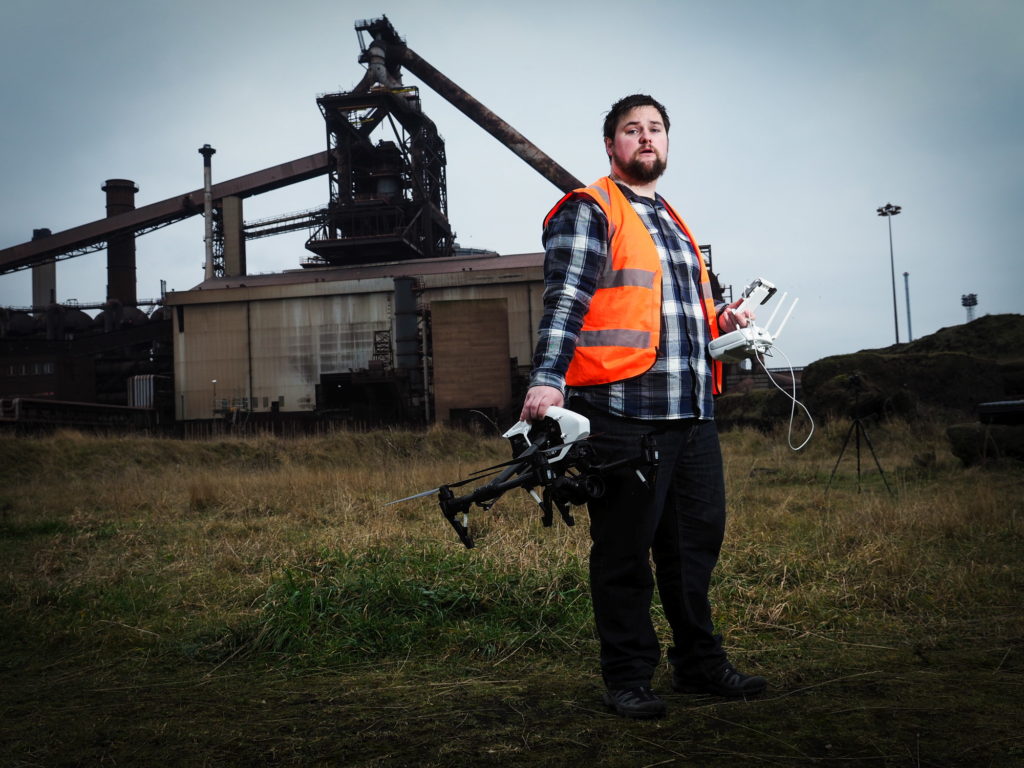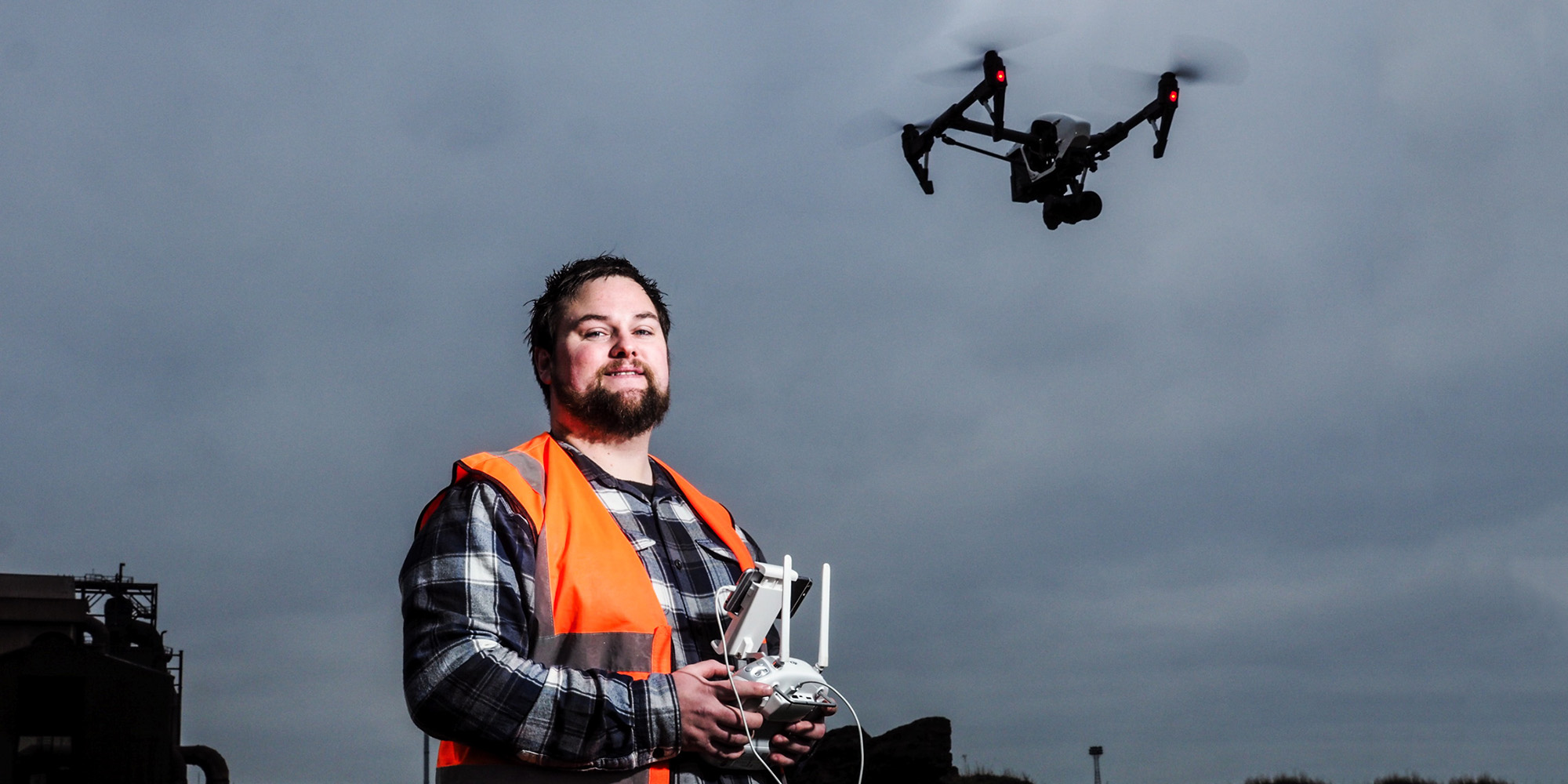Rise of
the robots
From drones delivering your post to robotic chefs,
automation looks set to eliminate a chunk of the workforce
but could also free us from dangerous jobs
As the current masters of the universe mingled at the World Economic Forum in Davos at the start of the year, it became clear that the Silicon Valley executives in attendance were worrying about the havoc their hi-tech creations could wreak. But it wasn’t the prospect that their artificial intelligence tech would create a robot class capable of usurping them. They were professing concern, perhaps surprisingly, about their workers.
“What you hope is that the technology doesn’t outpace the system so that it starts to strip the jobs away, and that’s the fear of artificial intelligence (AI),” said Marc Benioff, CEO of Salesforce, in Davos. He reflected the concerns of many among the political and business elite, gathered at the Swiss ski resort, who have been spooked by the populist uprisings against the established order that have brought Donald Trump and Brexit.
Employees may be sleepwalking into having their jobs pulled from under them
The optimistic view is that technology creates new markets, new products and therefore more jobs. But Bank of England governor Mark Carney warned in a speech in Liverpool last month that half of Britain’s 30 million jobs could be displaced by automation within decades. Workers in the north are already being hit, with big employers such as Fujitsu, Capita and HSBC replacing some staff with automated systems. In a sign of things to come, Asda’s parent company Walmart is trialling drones to do warehouse stock checks, while Amazon is testing delivery drones. From self-driving cars to fully automated farms and the replacement of accountants, call centre workers and even chefs, the nature of work is set to undergo a profound change.
The North Yorkshire town of Redcar is hundreds of miles from the snowy slopes of Davos but similar discussions over how new technologies will influence the labour market are playing out here. Redcar already knows a thing or two about economic disruption, with automation likely to make things more uncertain. In 2015, the town’s steelworks closed down with the loss of 3,000 jobs. It was the end of an industry that had taken place in the region for 170 years, causing a spike in unemployment of 16.2 per cent and precipitating the closure of other local businesses.
While many from the steelworks have become unemployed or taken less well paid jobs, former steelworker Lee Bullock embraced a new industrial era and invested in drones. The 28 year old, who flew model helicopters as a hobby while working at the steel plant, set up Aerial Aspect in 2015. As well as offering photography and filming services, the company conducts real estate inspections and 3D surveys. In a twist of fate, Bullock has recently returned to his old workplace to undertake a survey of the land surrounding the now cold blast furnace.
Drone technology saves time and money for Aerial Aspect’s clients, says Bullock, conducting quicker surveys and inspections with less manpower and eliminating the need for scaffolding or employees working at height. In the future, he plans to send drones into confined spaces. He believes this is a benefit for employment, not a threat.
“We’ve been in talks with a rope access company and when we first went in some of the staff were saying ‘you’re putting us out of the job’. But we still need people to look at the screen and do the inspection work, so these people aren’t losing their jobs. It’s just that they’re not being sent up on a rope.”
Bullock envisages more people learning to become drone pilots as the technology takes off. “People might be afraid of losing their jobs through automation, but I think that’s more in factories and that type of thing.”
Professor Samia Nefti-Meziani, head of Salford University’s Centre for Autonomous Systems and Advanced Robotics, puts forward a similar argument. She acknowledges that many low paid jobs will be replaced by machines but points out that many of them are unpleasant or hazardous. She doubts the losses will be as severe as some estimates – and believes they will be offset by growth elsewhere. As technology improves automated processes will generally augment human work rather than replace it, with positive results overall.

“There will be a lot of benefits,” she says. “I see the future of robotics in soft robotics, which are robots inspired by nature that can work closely and safely with humans to do very precise jobs and delicate tasks. For instance, we see this type of technology being adopted to address the challenges in healthcare.”
But Manchester-based applied futurist and consultant Tom Cheesewright advises caution about Nefti-Meziani’s assertion that automated technology will predominantly affect low-skilled work. Higher-paid employees may be sleepwalking into having their jobs pulled out from under them by labour-saving AI software, he warns.
A report from consultancy Jomati predicts that AI that will automate the work of lawyers means those “most affected would be the very large, high-value commercial firms whose associates expect to be given interesting work and many of whom aspire to the status and wealth that equity partnership affords”. Consultants at Deloitte say 39 per cent of jobs in the legal sector could be wiped out in the longer term.
“There’s a general misunderstanding and ostrich-like behaviour in certain sectors,” says Cheeswright. “The legal sector is going to be transformed. It’s the same with call centres. There’s software now called Amelia that can replace 80 per cent of call centres pretty much overnight. That’s a million jobs alone in this country. Yes, it’s delivery drivers being replaced with drones but actually it stretches up right into the heart of the professional services sector.”
Already, many of the most valuable companies in the world get by with a limited workforce. Google, which has a GDP comparable to Norway or Austria, employs just 60,000 people. Facebook, valued at $270 billion (£214 billion), has a workforce of 13,000. In 2014, Mark Zuckerberg bought the messaging service WhatsApp for $19 billion (£15 billion). At the time it had a staff of 55.
The trend is also evident in more physical sectors. The world’s largest electronics company, Foxconn, plans to replace a third of its workforce with robots within four years, while Amazon already has 30,000 robots worldwide that move stock around its warehouses. Amazon CEO Jeff Bezos has said it’s hard to overstate how big of an impact automation is going to have on society.
There are a number of hypotheses of what society might look like when most of the jobs have been automated and there’s less conventional work for the humans. Martin Ford, software developer and author of Rise of the Robots: Technology and the Threat of a Jobless Future, envisions “techno-feudalism”, where a plutocracy live in “gated communities or elite cities, perhaps guarded by autonomous military robots and drones” while modern-day peasants subsist outside.
Journalist Paul Mason, in his book Post-Capitalism, suggests a more optimistic outcome, in which laws, markets and businesses “evolve dramatically to match the potential of info-tech”.
His is a world of free flowing information, where all-powerful conglomerates such as Apple have been broken up. Governments redistribute wealth and bring vital services into public ownership but still encourage profit-driven market innovations, while preventing unscrupulous monopolies arising from them. Individuals get to harness that info-tech for co-operative and socially useful ends.
There is a plethora of views on where the changing world of work will take us, but nearly everyone – from the dystopian Ford and utopian Mason, to the Silicon Valley executives at Davos fretting about populist pitchforks – agrees that implementing a universal basic income will help offset the negative consequences of automation.
The end of work as we know it, for Cheesewright, could offer the possibility of liberation for those trapped by a stifling economic model.
“The nature of our economic system means that a lot of people do jobs they don’t want to – jobs that are unpleasant, dangerous or unfulfilling – and there is a very good prospect that all work like that will be eliminated,” he says.
“There is a good potential that automation fundamentally breaks the economic system we have and so one of the options is a much more collaborative approach where work, and the reward for work, becomes the value it delivers back to the community and society.”
Futurist Tom Cheesewright’s warning that automation could extend into unexpected areas of work is underlined by London-based Moley Robotics’ plans to roll out the first fully automated chef to consumers this year.
The robotic chef, which consists of two wall-attached arms with humanoid hands and moveable fingers, can be operated through an inbuilt touch screen or remotely through a tablet or smartphone.
Using an iTunes-like library, users can pick from more than 100 meals created by some of the world’s best chefs. Users can also choose how many portions they want, as well as inputting dietary restrictions, calorie counts and cooking methods.
Once a user has made their choice and laid the required washed and cut ingredients out, they simply push start and the machine cooks the food and even cleans up the kitchen afterwards.
Automation is also occurring further down the food supply chain. Many dairy farms already use automated technology that can mix and deliver feed, and milk the cows, meaning that a farm of 200 cows can easily be run with just three people.
Driverless tractors that follow pre-programmed routes are being used on large farms worldwide. Drones monitor crop growth and ground sensors test the soil and control irrigation and the spreading of fertilisers.
At Lincoln University researchers have developed a broccoli picking machine that uses a 3D camera and works six times faster than humans. In a matter of months the world’s first fully automated lettuce farm is due to be launched in Japan, even as technology continues to develop.

Leave a reply
Your email address will not be published.